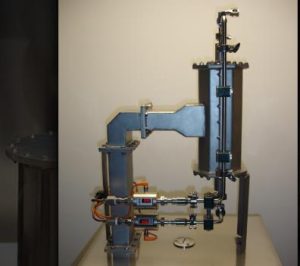What Is a Coaxial Termination?
Coaxial termination is a crucial component in RF (radio frequency) and microwave systems, ensuring signal integrity and preventing reflections that can interfere with communication and data transmission. Understanding the role and function of coaxial termination can significantly improve the performance of your RF setup.

Definition and Purpose
A coaxial termination, also known as a coaxial load, is a passive device used to terminate a coaxial transmission line or RF port. Its primary function is to absorb all the power from the signal with minimal reflection, effectively preventing signal bounce back that can cause interference and signal degradation. This is particularly important in high-frequency applications where even minor reflections can lead to significant performance issues.
Types of Coaxial Terminations
Coaxial terminations come in various types, designed to suit different applications and power levels:
Resistive Terminations
Resistive terminations are the most common type, using resistors to match the characteristic impedance of the transmission line, typically 50 ohms. These are ideal for low-power applications and are widely used in laboratory settings for testing and measurement purposes.
High-Power Terminations
High-power terminations are designed to handle greater power levels, often up to several hundred watts. These are essential in high-power RF systems such as broadcast transmitters and military radar installations. High-power terminations often incorporate heat sinks or other cooling mechanisms to dissipate the absorbed energy effectively.
Precision Terminations
For applications requiring extremely accurate impedance matching, precision terminations are used. These devices offer very tight tolerance levels, ensuring minimal reflection and optimal performance in sensitive measurement environments. Precision terminations are essential in calibration and test equipment where accuracy is paramount.
Applications of Coaxial Terminations
Coaxial terminations are used across a wide range of applications, including:
Testing and Measurement
In laboratory and field testing, coaxial terminations are used to terminate unused ports, ensuring that the signals being measured are not affected by reflections. This helps in obtaining accurate measurements and reliable data.
Communication Systems
In communication systems, coaxial terminations are used to prevent signal reflections that can cause interference and degrade signal quality. They are crucial in maintaining the integrity of signals in both transmitting and receiving ends.
Broadcast and Radar Systems
High-power coaxial terminations are essential in broadcast and radar systems to handle the large amounts of power generated. These terminations ensure that any unused or testing ports do not reflect signals back into the system, which could cause damage or reduce performance.
Selecting the Right Coaxial Termination
Choosing the appropriate coaxial termination depends on several factors:
Power Handling
Ensure the termination can handle the power level of your application. Using a termination rated for lower power in a high-power application can lead to failure and potential damage.
Frequency Range
Select a termination that operates effectively within the frequency range of your application. Mismatched frequency ranges can result in poor performance and increased reflections.
Impedance Matching
Ensure the termination matches the characteristic impedance of your transmission line, typically 50 ohms. Proper impedance matching is critical for minimizing reflections and maintaining signal integrity.
For more information on coaxial terminations and their applications, visit this detailed resource on coaxial termination.
Understanding the importance and functionality of coaxial termination can greatly enhance the performance and reliability of your RF and microwave systems. Proper selection and application of these devices are key to achieving optimal results in any high-frequency setup.